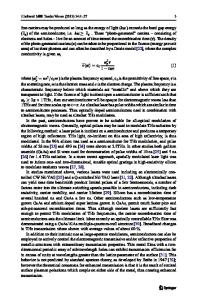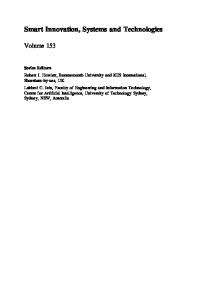A Brief Review of Multiaxial High-Cycle Fatigue
- PDF / 519,945 Bytes
- 9 Pages / 593.972 x 792 pts Page_size
- 83 Downloads / 324 Views
I.
INTRODUCTION
THE study of fatigue began in the West in the 19th century following several disastrous train accidents[1] and has evolved to include landmark work by Suresh, Socie, Morel and Palin-Luc and others published from 1993 to 2000.[1–4] In China, scientific study of fatigue started only in the 1950s and began to include multiaxial loading in the 1970s, accelerating in the 1990s due to the proliferation of critical components in developing industries such as automotive, high-speed railway, and aerospace. The treatment of multiaxial high-cycle fatigue is still in its infancy in spite of the progress that has been made. Researchers cannot systematically model the micromechanisms of high-cycle fatigue under multiaxial loading, and prediction methods for highcycle fatigue life remain immature. Both domains require further study.[5–8] Multiaxial fatigue has proven more difficult to model than uniaxial fatigue for a number of reasons. The presence of orthogonal stresses in various combinations of phase angle and proportionality complicates the problem beyond the simple mean stress effect that challenges uniaxial fatigue. Whereas stress- and strainbased solutions successfully predict fatigue behavior in uniaxial fatigue, as will be reviewed subsequently, these approaches have proven inadequate in multiaxial fatigue. Further, verification of multiaxial models is XIANGQUN DING, Associate Professor, GUOQIU HE, Professor, CHENGSHU CHEN, Professor, ZHENGYU ZHU, Ph.D Student, and XIAOSHAN LIU, Ph.D Student, are with the Institute for Metal-Based Materials Research, School of Material Science and Engineering, Tongji University, Shanghai, People’s Republic of China, and Shanghai Key Lab. for R&D of Metallic Functional Materials, Shanghai 200092, People’s Republic of China. Contact e-mail: [email protected] PAUL N. CREPEAU, Doctor, is with the, General Motors Corporation, Pontiac, MI 48340, USA. This article is based on a presentation made in the symposium entitled ‘‘Simulation of Aluminum Shape Casting Processing: From Design to Mechanical Properties,’’ which occurred March 12–16, 2006 during the TMS Spring Meeting in San Antonio, Texas, under the auspices of the Computational Materials Science and Engineering Committee, the Process Modeling, Analysis and Control Committee, the Solidification Committee, the Mechanical Behavior of Materials Committee, and the Light Metal Division/Aluminum Committee. Article published online March 27, 2007. METALLURGICAL AND MATERIALS TRANSACTIONS B
difficult—multiaxial fatigue testing is complex and costly, so research tends to focus on subsets of possible combinations of material, stress state, phase angle, and nonproportionality. Models for multiaxial fatigue based on stress-strain analysis (mostly derived from axial solutions), energy concepts, and critical plane micromechanics have required both development and postulation of new material constants and simplifying treatment of both stress state and loading waveform. For instance, biaxial stresses may be treated separately or combined
Data Loading...











